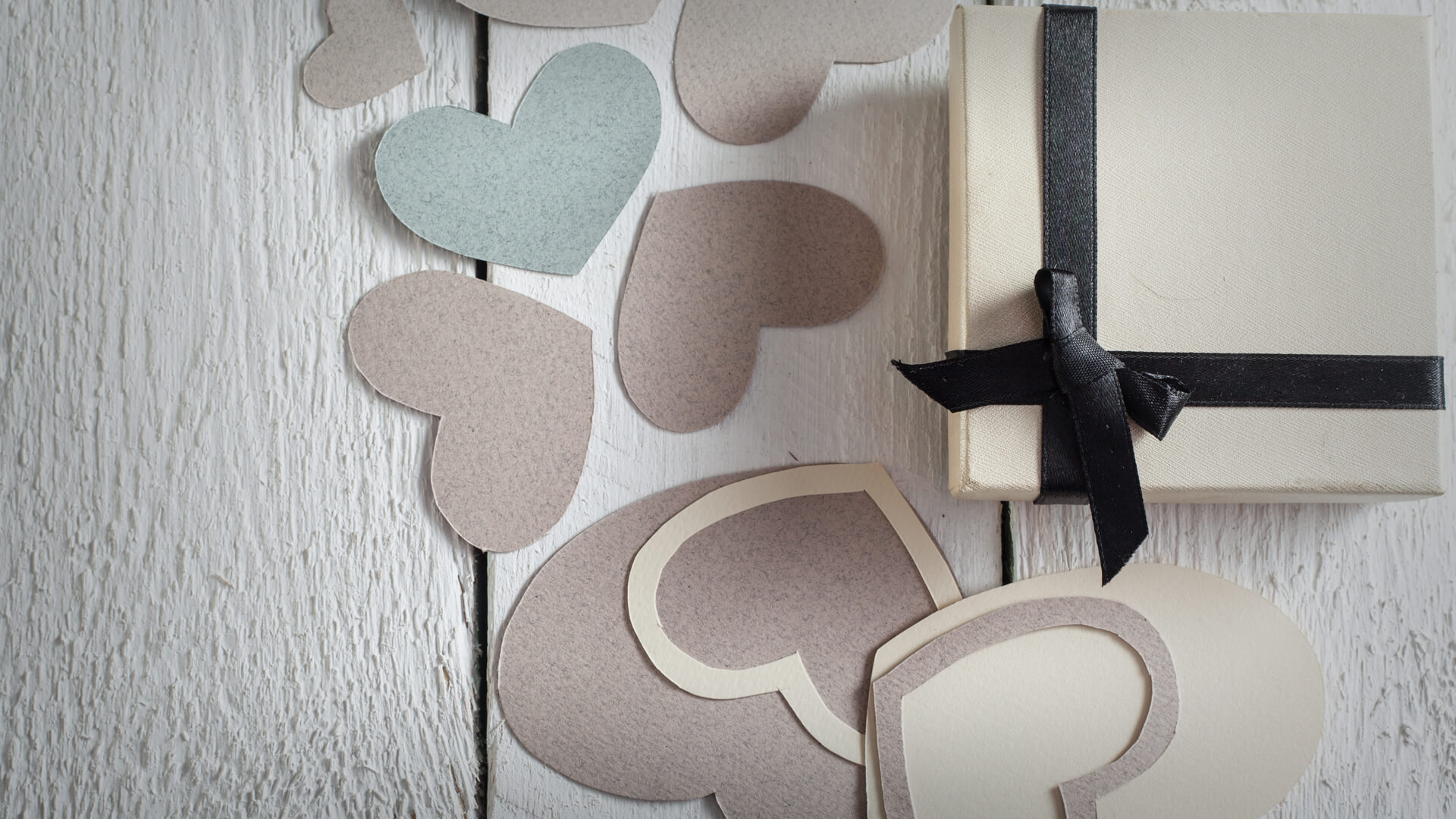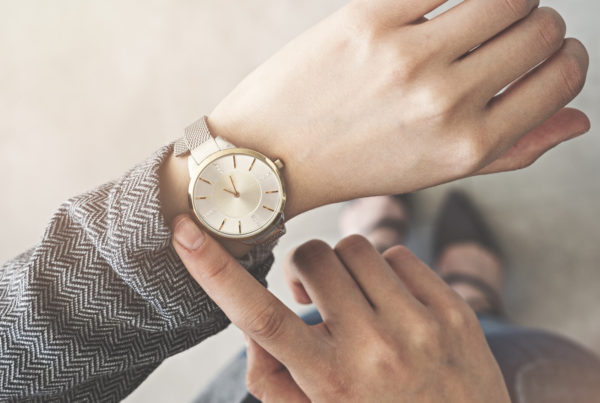Picture this: You’re stressed. Your body is feeling a strange combination of frozen and jittery at the same time. Your brain is zigging and zagging here and there, and you can’t locate a reasonable thought in between the zigs and the zags.
When people feel emotionally triggered, they are invariably needing experiences of calm and grounding. Yet ironically, this is the very time when the pre-frontal thinking brain goes offline and the parts of brain that hold panic and unresolved trauma get louder. The ability to rationally review healthy choices and make good decisions seems to disappear. That nice list of helpful anxiety-reducing hints that your friendly therapist reviewed with you four weeks ago seems wiped from your memory.
This is a perfect time to bring out what I have come to call Comfort Boxes, which is a box or other kind of container that holds a variety of items that serve to comfort and calm people who are reeling under significant anxiety.
Comfort Boxes bring several important reminders and supports for calming and strength together in one place. It’s a “one-stop solution” so the stressed one doesn’t need to take time and energy to search out various items and reminders when strong feelings show up. And having the items in one place removes generalities – instead of “call a friend,” there is the name of the friend and his or her phone number – and maybe even a photo of the friend.
I created this Comfort Box assignment when I was seeing several clients who reported that they felt too distracted to think easily and make good decision for themselves. It seemed to make sense to have all the items in one place and serves as an important adjunct to therapy.
How to Make a Comfort Box
The first step is to find or make a suitable container, making sure it will be large enough to hold all the items the individual wants to include. Next, you will have to decide what you want to put in the container. I use the three categories of strengths from the Therapeutic Spiral Model(developed by Kate Hudgins, Ph.D., TEP) as a guide for the contents:
Personal strengths – traits within ourselves that we like and are proud of.
Relational strengths – aspects of relationships with others that feel supportive and loving or have felt so in the past.
Spiritual strengths– what nourishes and inspires the spirit, perhaps relating to a specific religious figure, nature, music, angels or other life-supporting reminders.
Typical strengthening items might include:
- Encouraging note from a favorite teacher, friend or counselor
- A piece of velvet or fake fur to touch
- Sensory putty
- Greeting card from a friend or family member
- Calming pictures cut out from a magazine
- Paper and colored pencils
- Journal and pen
- A postcard with a prayer
- Photo of you as a baby or younger self
- Names and phone numbers of three friends to call
- Stone to hold
- Calming essential oil like lavender or bergamot
- Hand-written message of support from a therapist, or from a group or 12-step members
- Favorite CD or DVD that is inspirational and life-giving
- Package of inspirational cards
I’ve worked with Comfort Boxes for several years and have since seen a similar concept online on sites like Pinterest, usually called “calm down kits,” but they’re often heavily commercialized, with lots of things to buy, rather than things to make or gather, and often are focused on distracting activities rather than therapeutic strength-building activities. Also, I do not suggest food or edible items like candy or gum in the Comfort Boxes because I don’t want to encourage the use of junk food or sugary items as solutions to deal with stress.
Examples
- When I was working with Lenore, who had been sexually abused as a teen by her uncle, she admitted that there were times that she zoned out, felt panicked or was unable to concentrate. She knew this wasn’t productive or helpful to her especially if she was trying to do her homework or another task, and she didn’t like feeling shaky and out of control.
I walked her through a description of the Comfort Box, and we discussed some general items that she might want to include, such as a favorite DVD movie about a lost (then found) dog and a small journal with a colorful cover. Then we personalized it further –- what did Lenore find especially soothing? She told me that she loved to take time to brush her hair, or have her hair brushed, something her mother did for her when she was a small child. The hairbrush became an important ingredient of her box, along with a set of inspirational cards, and an amethyst crystal that her best friend gave her before she moved to another state.
- Angelica came to me feeling anxious about her upcoming separation from her drug-addicted husband and concerned about the well-being of their three children who had often been the focus of his angry outbursts. I introduced her to the concept of the Comfort Box, which she liked because she enjoyed crafts.
She found a pretty box that she had received as part of a birthday present and carefully lined it with glitter-speckled orange tissue paper; orange was her favorite color. Among her contents were a blue jay feather she had found on a walk (she described the birds as fiercely protective of their families), as well as a bottle of lavender-scented hand lotion, the written lyrics of a favorite song, a pair of pink plush socks that she could wear when she wanted to feel pampered and a small stone upon she had written the word “sing,” one of her favorite activities.
At home, Angelica showed her box to her children and explained why she decided to make it. Then she encouraged each to make their personal boxes.
- Devlin became excited when he made his box during a group art project. The 15-year-old selected a large shoebox from a table of donated boxes and began decorating the box with pictures of muscular men as well as stickers of Spider-Man, a favorite superhero when he was younger. As he cut and glued, we talked about how Spider-Man wasn’t just big and strong, he was also known for his “Spidey sense,” an important kind of intuition that sensed imminent danger and other subtle feelings – feelings that humans have that are a real gift to help us function in the world.
Inside the box, Devlin placed items that he had brought from home for the project: a small plastic toy of a teen riding a skateboard, his favorite activity, and a blue bandana handkerchief that had belonged to his great-grandfather, who had served in the Army in World War II. Although he did not know a lot about history, he said he was proud of his great-grandfather’s ability to survive a difficult and dangerous time. He added photos of himself and his cat, which lived at his “other” house and a leather bracelet that he had made, along with materials to make more bracelets if he wanted. When the box was closed, he collaged more words – such as “good,” “truth” and “strength” on the outside of the box.
———
Comfort Boxes are great projects for a young person to make in a therapy group or during a 1-1 session. It can also be a great family activity; a box is could be made for the whole family, or each child (and parent) could make a box for himself or herself.






